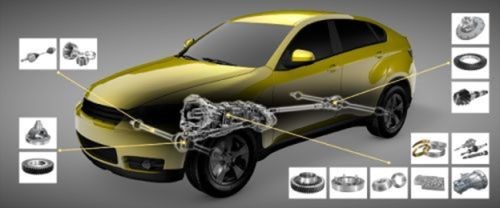Tips on Breaking Chips When Turning Transmission Parts
Components for automotive transmissions are typically made of ductile steels such as SAE 1018, 1020 and 8620. Turning these parts is often plagued by problems with long, stringy chips. This article from Sandvik Coromant addresses the complex variables and strategic trade-offs that must be considered in designing the most effective insert for this application. The insights into the problem and its solution will help anyone think more clearly about vexing chip control issues.
Share






Components for automotive transmissions are typically made of ductile steels such as SAE 1018, 1020 and 8620. Turning these parts is often plagued by problems with chip control, especially the tendency for these materials to produce long, stringy chips that interfere with efficient operation and/or automated production. This article from Sandvik Coromant addresses the complex variables and strategic trade-offs that must be considered in designing the most effective insert for this application. The insights into the problem and its solution will help anyone think more clearly about vexing chip control issues.
Related Content
-
Briquetting Manufacturer Tools Up for Faster Turnaround Times
To cut out laborious manual processes like hand-grinding, this briquette manufacturer revamped its machining and cutting tool arsenal for faster production.
-
Shoulder Milling Cuts Racing Part's Cycle Time By Over 50%
Pairing a shoulder mill with a five-axis machine has cut costs and cycle times for one of TTI Machine’s parts, enabling it to support a niche racing community.
-
Inside the Process of Cutting Tool Recycling
Global Tungsten & Powders, part of the Ceratizit Group, sheds light on the processing steps that convert a shop’s used inserts into new tools and other applications.













